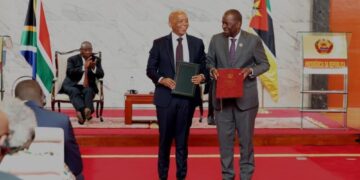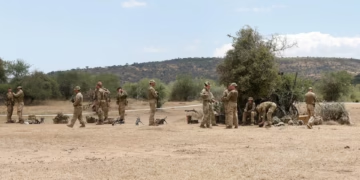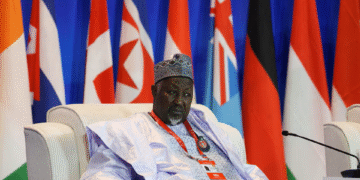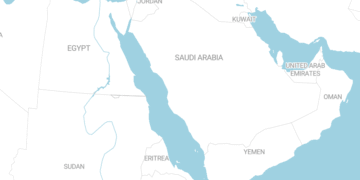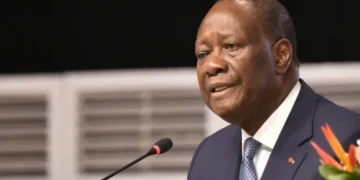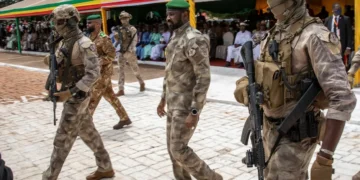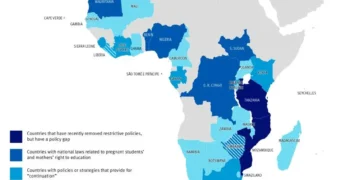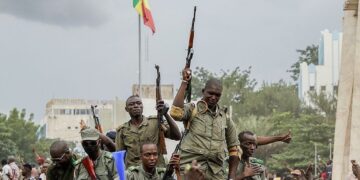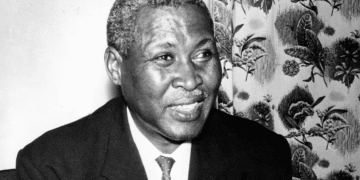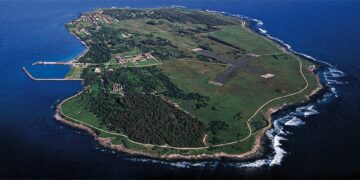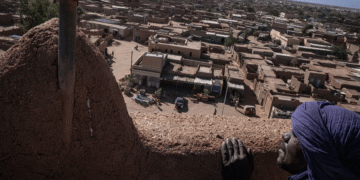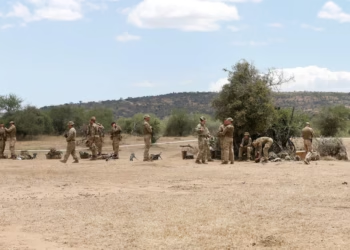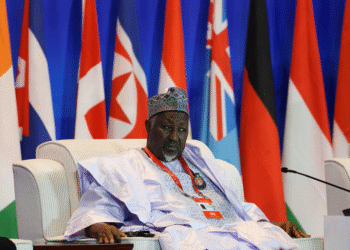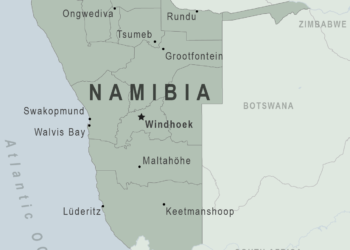On January 22, 2025, various news outlets reported that a joint force of 5000 troops from military-led neighbors Niger, Burkina Faso, and Mali shall be deployed in their central Sahel region, as announced by Niger’s defense chief on state television. This proposal follows the country’s decision to officially withdraw from West Africa’s political and economic bloc, ECOWAS, resulting in the formation of a confederation known as the Alliance of Sahel States (AES). As reported, the joint force was named the Unified AES Force and shall be visible on the ground within a few weeks.
Based on the above, this article looks at the chances of success for the new joint force, and also analyze the obstacles standing in the way of the joint forces objective to eliminate terrorism in the Sahel region.
What Led to AES Exit from ECOWAS?
Relations between Ecowas and the three sahel countries have been strained since the military seized power in Mali (2020/2021), Burkina Faso (2022), and Niger (2023). Following Ecowas’s frown at the military grab of power, crippling sanctions were imposed on the three countries, and on Niger most particularly, aimed at the reversal of military coups and re-adoption of democratic led governments. These sanctions include travel bans, border closure, and numerous political, commercial, and economic sanctions. Also, Ecowas threatened to deploy forces to Niger in order to restore democratic rule, if the military led government do not bow.
However, Ecowas’s condemnation, sanctions, and restrictions weren’t convincing enough for the military led governments to bow and dance to Ecowas’s tune. Instead, the situation became grave and got escalated, as the three countries announced their exit from Ecowas, a decision that sparked concerns among international communities. The three military led governments accused Ecowas of becoming a threat to their membership, citing that it failed to support their fight against terrorism and insecurity. They also accused Ecowas of being influenced by Western powers, most specifically France, and thus imposed illegitimate, inhumane, and irresponsible sanctions on AES, due to the tense relationship between France and the military led governments. Following this move, Ecowas lifted all drastic sanctions earlier placed on the three countries after an extraordinary summit in Abuja, Nigeria, on February 25, 2024.
Formation of the Alliance of Sahel States (AES)
The exit of Niger, Burkina Faso, and Mali from Ecowas resulted in the formation of Alliance of Sahel States (Alliance des États du Sahel – AES). The Alliance was originally made as a defence pact to back up the threat of retaliation against the Ecowas, if it militarily intervened in Niger, following the coup.
The Alliance of Sahel States then became established on September 16, 2023, with the signing of the Liptako – Gourma Charter by the Military Heads of States. The accord obligates the three nations to cooperate in order to end or prevent terror crisis, and work together towards mutual support for the benefit of communities. This was followed up with a more formal announcement to leave ECOWAS in 2024.
Regional Force Coalition in the Sahel Region
For over a decade, Violent extremism remains one of the Sahel region’s pressing security threats, as the region’s vulnerability to terrorism has intensified, and insurgency attacks have spread across the region, leaving civilians vulnerable to harm. Notably, The continual collapse of international counterterrorism support, as well as weakening leadership in regional efforts, has created a vacuum in which violent extremism can expand. Islamic Jihadist Organizations which terrifies the region includes Jama’at Nusrat al-Islam Wal Muslimeen (JNIM), Islamic State in the Greater Sahara (ISGS), Islamic State in the West African Province (ISWAP).
Preventing and mitigating violence in the region requires a joint effort, with much of the conflict occurring in border regions, where state lines are unclear, and the influence of central governance is weak. In response to this, Sahelian governments have deployed strategies and actions in response to insecurity at regional levels. Among these measures is the formation and operationalization of regional joint forces, such as the Multinational Joint Task Force (MNJTF) and the G5 Sahel Joint Force, to combat Islamic Jihadists and put and end to the violence. However, this aim wasn’t totally achieved due to numerous challenges, while the region continues to witness an increase in instability and insecurity due to unending attacks from the Islamic Jihadists.
-
The Multinational Joint Task Force (MNJTF) & Its Challenges:
The Multinational Joint Task Force (MNJTF), which was established in 1994 by the Federal Republic of Nigeria to checkmate trans-border armed banditry around the general area of Lake Chad Basin (LCB) and facilitate free movement along Nigeria’s northeast border, had only troops from the Nigerian Army initialy, but operated in liaison with the militaries and security agencies of the Lake Chad Basin Commission (LCBC) member countries. However, in 1998, the Force received a boost and was made fully multinational by the inclusion of Chadian and Nigerien troops who alongside their Nigerian counterpart had the mandate of dealing with common cross-border security challenges within the Lake Chad Region.
In 2014, when the spate of Boko Haram activities heightened, leading to the displacement of communities as well as the dislodging of some military locations, the MNJTF was remodeled and re-operationalized with an increased capacity of about 10,000 troops and its new Headquarters in N’Djamena – Chad. The new Force was mandated by the LCBC to create a safe and secure environment in the areas affected by the activities of Boko Haram and other terrorist groups. The Force commenced operations on 30th July, 2015 with Cameroon, Chad, Niger and Nigeria as Troops Contributing Countries, each having a Sector of Brigade strength domiciled in-country. The Republic of Benin also contributed a company of troops to the Force although not in combat capacity.
The force’s record since 2014 is generally encouraging, with successes achieved in halting Boko Haram’s territorial expansion. Through several operations, such as Lake Sanity, the MNJTF has regularly disrupted Boko Haram by dismantling its bases, arms caches, weapons and armour manufacturing workshops. Fighters – including commanders – were neutralized, and occupied communities were liberated.
However, The MNJTF’s success momentum went low, as it couldn’t survive the rift between countries that contribute its troops and resources. Following Niger’s 26 July 2023 coup, the country has been in a ‘stand-down’ mode from the force. Also, Chad threatened to withdraw from the force in November 2024. At the same time, the MNJTF faced some internal challenges that needed attention, such as insufficient troops and equipment to deploy to islands and swamplands, and difficulties combatting IEDs and communicating effectively.
-
The G5 Sahel Joint Force & Its Challenges:
The G5 Sahel Joint Force (la Force conjointe du G5 Sahel), was established in 2017, by the G5 Sahel countries Burkina Faso, Chad, Mali, Mauritania and Niger, with France being a key partner, to respond to the expansion of armed and violent extremist groups and to the deteriorating security situation in the region. The Heads of States of the G5 Sahel countries launched this initiative to enhance the safety and security of their populations by pooling and multiplying their national efforts to fight against common security threats.
However, The G5 Sahel countries faced multiple challenges which caused a setback in the sustainable functioning of the joint force. These challenges include incomparable capabilities of the countries armies, the lack of capable donor among its members to disburse an important sum of money, as happened in the case of Nigeria in the MNJTF. Also, The Force fights in a wide area containing a proliferation of terrorist armed groups that are intertwined and often split up into different fractions, unlike the MNJTF fights against a single common enemy; Boko Haram, isolated in a relatively confined area in the Lake Chad basin. The force was then disbanded after setbacks in military cooperation between Sahel countries such as Mali, Burkina Faso and Niger and France, the force’s main partner.
The Proposed Unified AES Force & Its Potential challenges
The proposed unified AES force, just like the past regional force coalition, aims to address the growing security threats in the region. However, it is glaring that pressing challenges that could hinder or limit the joint force’s success loom ahead. Some of these challenges include the disintegration of international and regional support through the termination of the defense alliance with France and the exit from ECOWAS. It should be noted that AES’s desire to be autonomous in the fight against terrorism in the region is challenging enough.
Also, the glaring structural weakness and vulnerabilities of the security framework for each members of the AES, tends to challenge the joint force success, as the wide security vacuum created by AES’s breakaway, is being exploited by violent extremist. In recent years, extremist violence has surged across the region, despite claims of tackling insecurity, by the military juntas.
Another challenging issue is the finance of the joint force, which shall solely be on the AES necks. given their limited financial capacities, it is unlikely that they will be able to carry out the financially intensive war on terrorism on their own. In addition, the AES’s shift towards Russia tends to challenge its claims of being independent. Despite criticizing ECOWAS of being influenced by western powers, AES pivoted towards the Russian Wagner Group, and established ties with Russia in different sectors. This indicates a growing incursion of Russian Influence on the bloc.
In order to ensure a smooth operationalization of the Unified Joint Force, careful considerations must be made to the potential consequences of these possible challenges.



